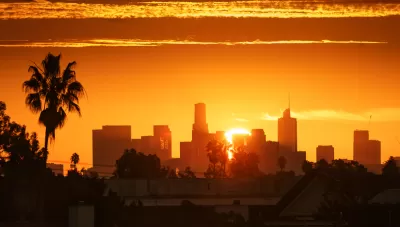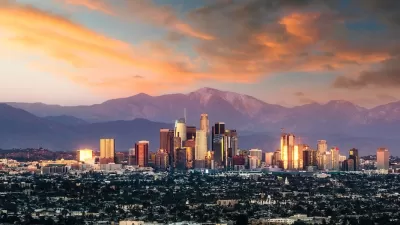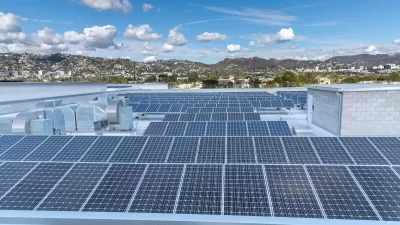The revised plan reflects the county's commitment to fighting climate change and identifies strategies, measures, and actions to mitigate greenhouse gas emissions from community activities and some municipal operations.

Climate change is a real, urgent, and significant threat, with impacts being felt today in Los Angeles County, across the U.S., and around the world. Climate change has already adversely impacted L.A. County residents—especially the most vulnerable—and can harm the health, safety, and welfare of future generations. On September 4, 2018, the County Board of Supervisors adopted a motion supporting the 2016 Paris Climate Agreement and added the County to the We Are Still In Declaration. By this action, the County is committed to adapting its programs and services to reduce unincorporated Los Angeles County's greenhouse gas (GHG) emissions and help limit global temperature increases.
This 2045 Los Angeles County Climate Action Plan (2045 CAP) is the County’s strategy to meet the goals of the Paris Agreement and achieve carbon neutrality for the unincorporated areas of Los Angeles County. The 2045 CAP builds on previous climate action work from the Unincorporated Los Angeles County Community Climate Action Plan 2020 (2020 CCAP), adopted in October 2015 as a subcomponent of the Air Quality Element of the Los Angeles County General Plan 2035. The 2045 CAP identifies strategies, measures, and actions to mitigate GHG emissions from community activities, which may include some municipal operations.
The public can provide input by reviewing and commenting on the Revised Draft 2045 CAP and Recirculated Draft Environmental Impact Report (DEIR). The public review period began on March 16, 2023 and will end on May 15, 2023. Comments should be sent to: [email protected].
FULL STORY: Climate Action in LA County

Planetizen Federal Action Tracker
A weekly monitor of how Trump’s orders and actions are impacting planners and planning in America.

Maui's Vacation Rental Debate Turns Ugly
Verbal attacks, misinformation campaigns and fistfights plague a high-stakes debate to convert thousands of vacation rentals into long-term housing.

San Francisco Suspends Traffic Calming Amidst Record Deaths
Citing “a challenging fiscal landscape,” the city will cease the program on the heels of 42 traffic deaths, including 24 pedestrians.

Defunct Pittsburgh Power Plant to Become Residential Tower
A decommissioned steam heat plant will be redeveloped into almost 100 affordable housing units.

Trump Prompts Restructuring of Transportation Research Board in “Unprecedented Overreach”
The TRB has eliminated more than half of its committees including those focused on climate, equity, and cities.

Amtrak Rolls Out New Orleans to Alabama “Mardi Gras” Train
The new service will operate morning and evening departures between Mobile and New Orleans.
Urban Design for Planners 1: Software Tools
This six-course series explores essential urban design concepts using open source software and equips planners with the tools they need to participate fully in the urban design process.
Planning for Universal Design
Learn the tools for implementing Universal Design in planning regulations.
Heyer Gruel & Associates PA
JM Goldson LLC
Custer County Colorado
City of Camden Redevelopment Agency
City of Astoria
Transportation Research & Education Center (TREC) at Portland State University
Jefferson Parish Government
Camden Redevelopment Agency
City of Claremont





























